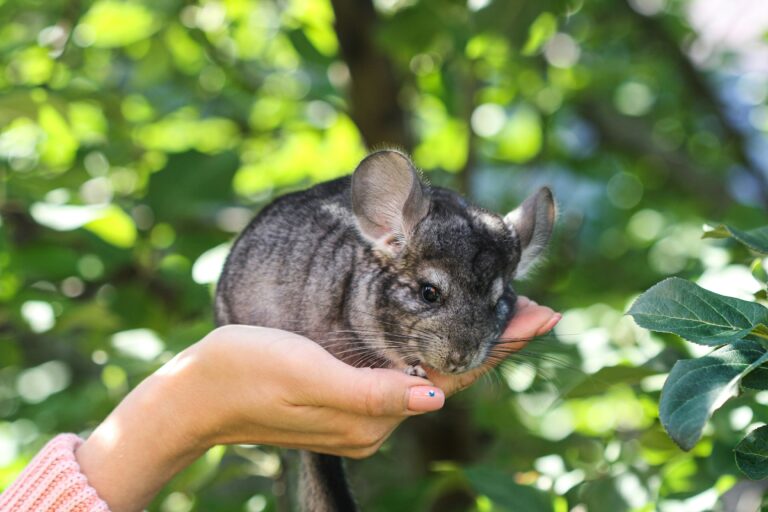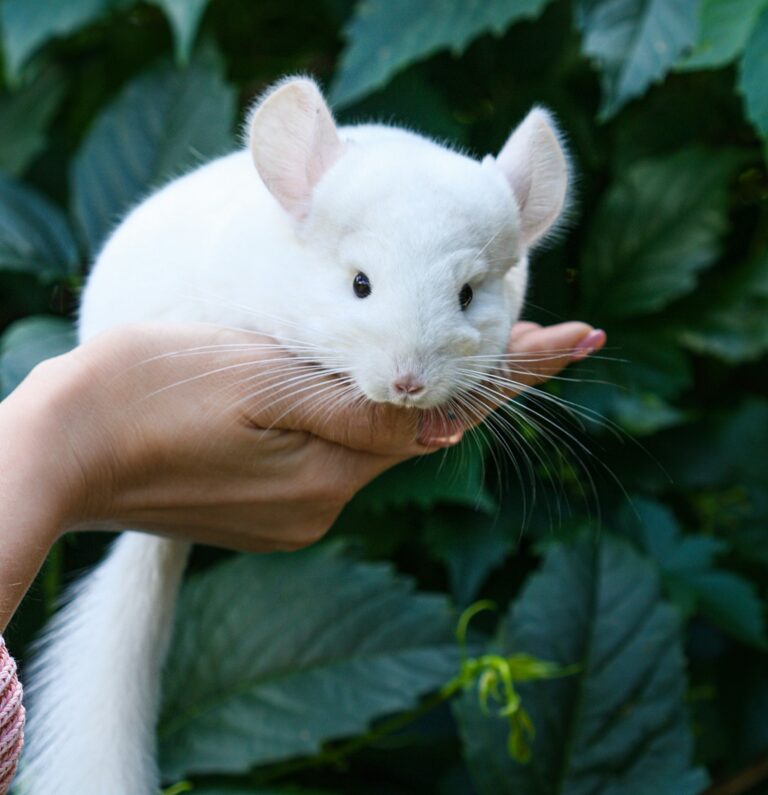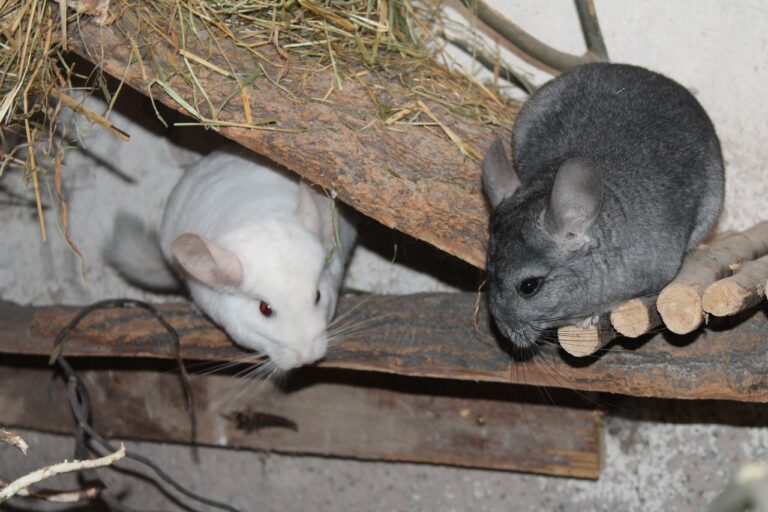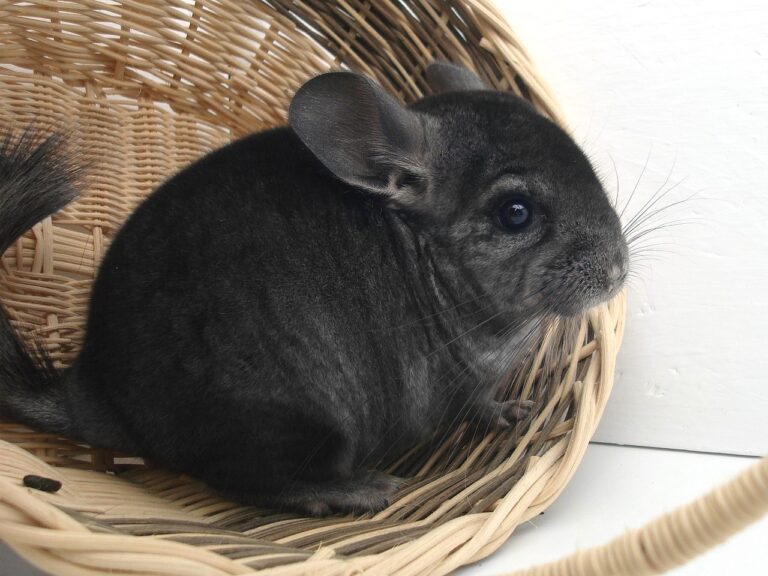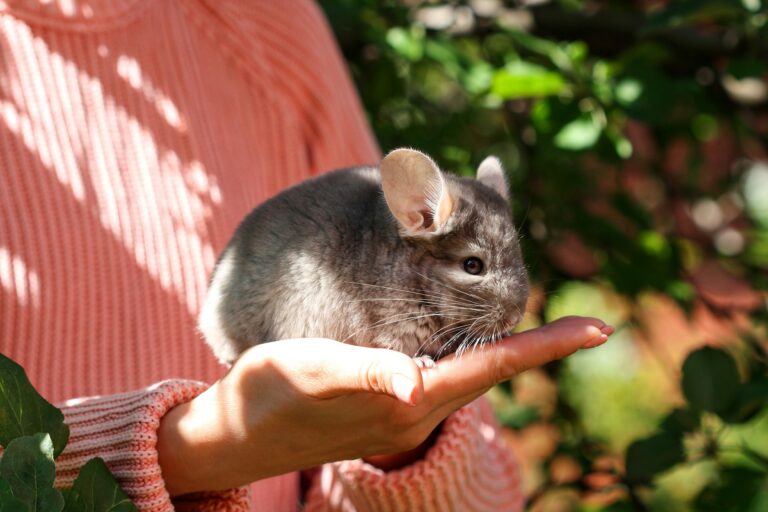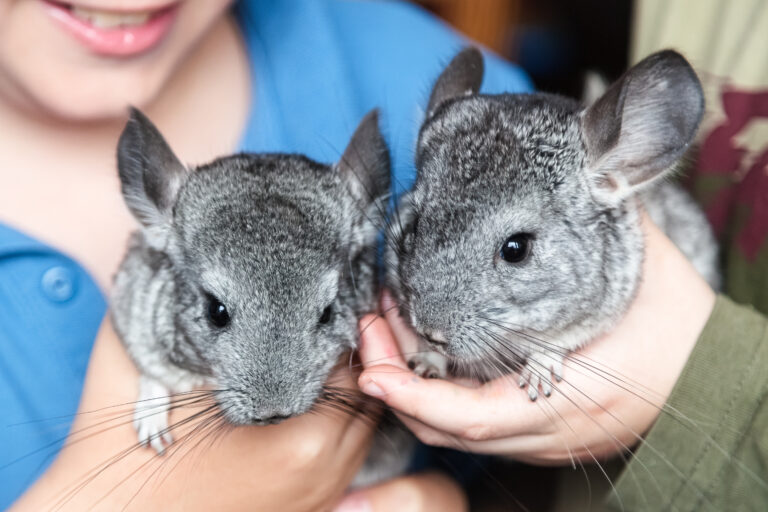Understanding and Caring for Pet Chinchillas

Chinchillas, with their soft fur, playful demeanor, and unique behaviors, have become increasingly popular as pets worldwide. Originally native to the Andes Mountains in South America, these small rodents have adapted well to domestic life when provided with proper care and attention.
In this post, we’ll explore what it’s like to have a pet chinchilla, from their characteristics and behaviors to their dietary needs and habitat requirements.
Getting to Know Chinchillas
Physical Characteristics
Chinchillas are small, furry rodents with distinctive features. They typically weigh from 1 to 1.5lbs and measure around 9 to 15 inches in length, not including their bushy tails, which can add another 6 inches. Their soft, dense fur is one of their most notable traits, consisting of over 50 hairs per follicle, making it incredibly plush and velvety to the touch! This fur comes in various colors, including gray, beige, black, and white.
Their large, expressive eyes and large ears contribute to their adorable appearance and help them detect potential predators in their natural habitat. Chinchillas also have a unique feature called a ‘whisker spot’—a patch of thick fur on their cheeks where their vibrissae or whiskers are located. In the wild these whiskers can help the chinchilla detect vibrations and better navigate in dark crevasses.
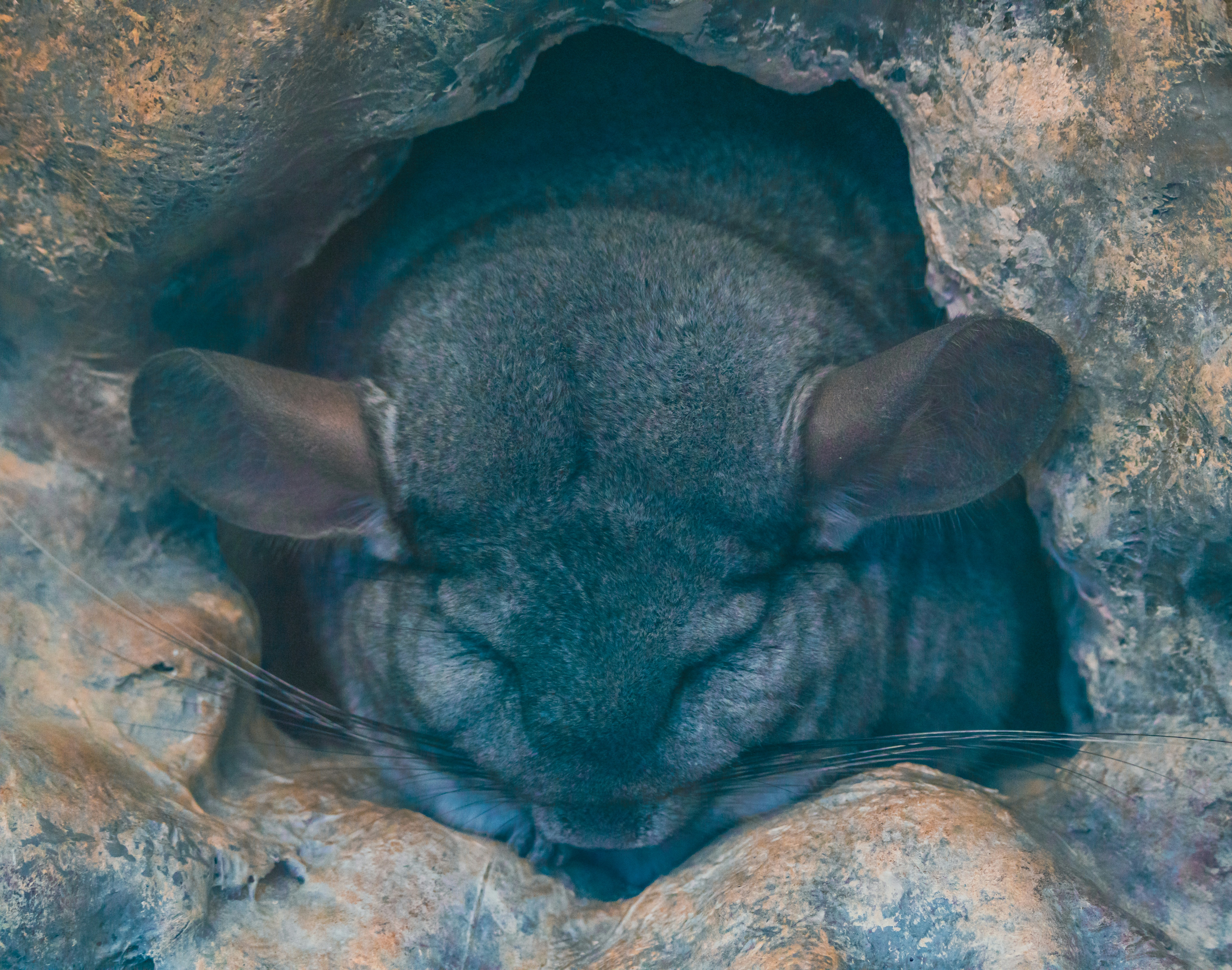
Behavior and Temperament
Pet chinchillas are known for their curious and social nature. While they may initially be shy or skittish, with proper handling and socialization, they can become quite affectionate and enjoy interacting with their human companions. Chinchillas are crepuscular animals, meaning they are most active during dawn and dusk, which aligns well with many people’s schedules.
Chinchillas exhibit various behaviors that reflect their natural instincts. They are agile climbers and enjoy exploring their surroundings, so providing plenty of opportunities for climbing and jumping is essential! Chinchillas are also known for their love of chewing, as their constantly growing teeth require regular wear to prevent overgrowth. Providing safe chew toys made of wood or pumice stone can help satisfy this instinctual behavior and prevent dental issues.
Housing and Habitat Requirements
Cage Setup
Providing a suitable habitat is crucial for the health and well-being of your pet chinchilla. A large, multi-level cage made of metal with narrow bar spacing is recommended to prevent escape. The cage should be spacious enough to allow for exercise and exploration, with platforms, ramps, and tunnels for enrichment. Chinchillas are highly active animals and require ample space to run, jump, and play.
It’s essential to choose a cage with a solid bottom to prevent injury to your chinchilla’s delicate feet, as wire floors can cause foot problems. Additionally, providing a hiding house or nest box where your chinchilla can retreat and feel secure is important, as they appreciate having a quiet, secluded space to rest.
Bedding and Substrate
Chinchillas are known for their love of digging and burrowing, so providing an appropriate substrate is essential. Aspen shavings or kiln-dried pine bedding are suitable options, as they are safe for chinchillas and absorbent. Avoid using cedar bedding, as it contains aromatic oils that can be harmful to small animals.
In addition to bedding, providing hay for your chinchilla to burrow in and nibble on is essential for their mental and physical well-being. Fresh hay, such as timothy hay or orchard grass, should be provided at all times to mimic their natural habitat and aid in digestion.
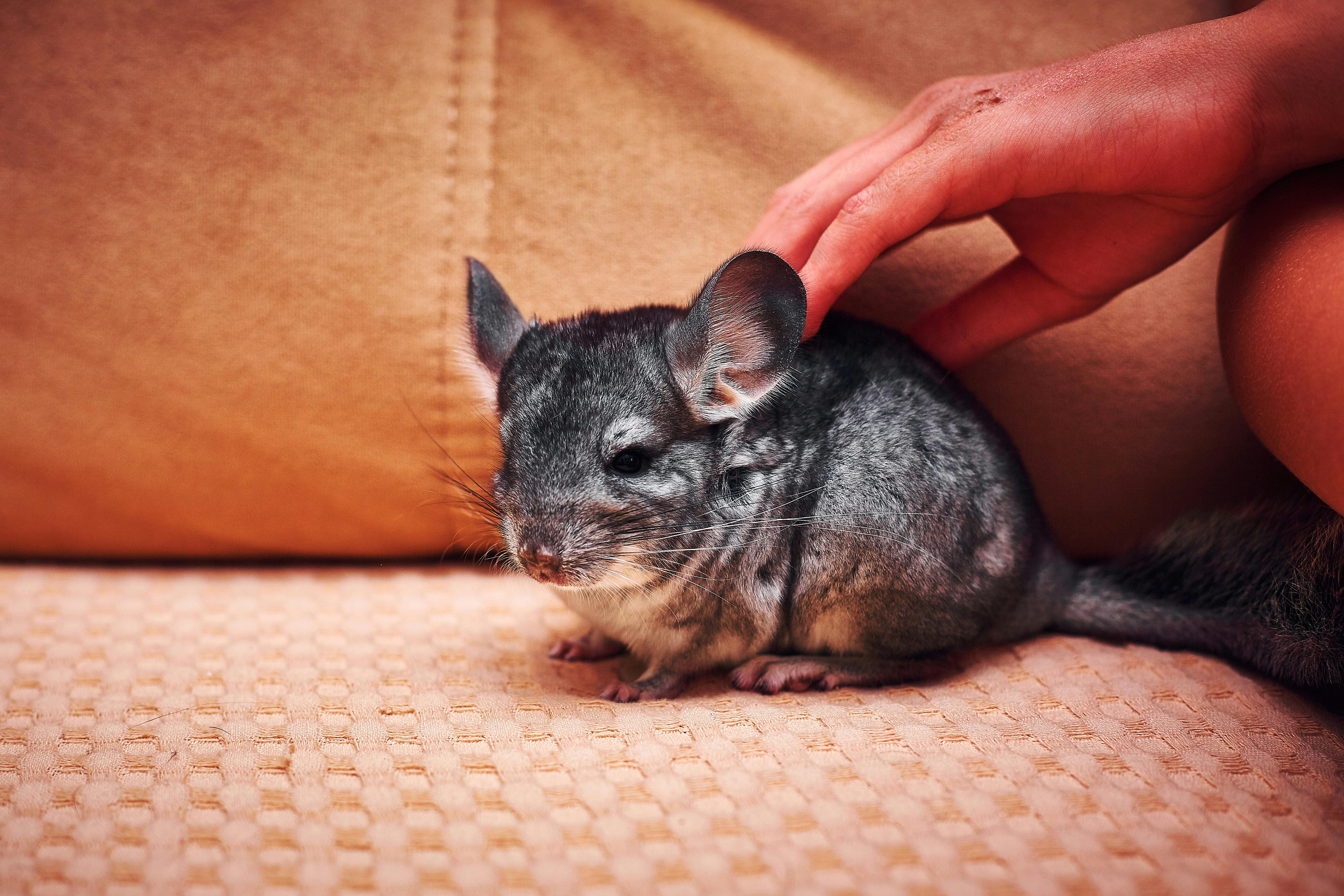
Diet and Nutrition
Feeding Requirements
A proper diet is essential for maintaining the health and vitality of pet chinchillas. Their diet should include high-quality chinchilla pellets formulated specifically for their nutritional needs. Look for pellets that are high in fiber and low in fat, as chinchillas are prone to digestive issues and obesity.
In addition to pellets, fresh hay should make up the majority of your chinchilla’s diet. Hay provides essential fiber for proper digestion and helps wear down their constantly growing teeth. Offering a variety of grass hays, such as timothy, orchard grass, and meadow hay, can help keep your chinchilla’s diet interesting and provide essential nutrients.
Treats and Supplements
While treats can be given occasionally as a reward or for enrichment, it’s important to avoid overfeeding sugary or fatty treats, as chinchillas are prone to obesity and gastrointestinal issues. Safe treats include small pieces of dried fruits, such as apple or raisins. Try to avoid treats with added sugar. Offer treats sparingly, as they should only make up a small portion of your chinchilla’s diet.
Additionally, providing a vitamin and mineral supplement formulated for chinchillas can help ensure they are receiving all the nutrients they need to thrive. However, supplements should be used sparingly and only as directed, as over-supplementation can lead to health problems.
Grooming and Hygiene
Dust Baths
Chinchillas have dense fur that requires regular grooming to prevent matting and maintain cleanliness. Unlike other small mammals that bathe in water, chinchillas take dust baths to remove excess oils and dirt from their fur. A shallow container filled with chinchilla dust should be provided several times a week to allow your pet to indulge in this natural behavior.
To set up a dust bath, simply place a small amount of chinchilla dust in a sturdy container large enough for your chinchilla to roll around in comfortably. Allow your chinchilla to bathe for 10 to 15 minutes at a time, then remove the dust bath to prevent soiling.
To learn more about dust baths, check out our article here!
Nail Trimming
Regular nail trimming is also necessary to prevent overgrowth and discomfort for your chinchilla. Chinchillas have sharp, curved nails that can become overgrown if not trimmed regularly. Specialized small animal nail clippers can be used for this purpose, and it’s advisable to have styptic powder on hand in case of any accidental nicks.
To trim your chinchilla’s nails, gently restrain them using a towel or blanket and carefully trim the tips of their nails, being mindful not to cut too close to the quick. If you’re unsure how to trim your chinchilla’s nails safely, consult with your veterinarian or a professional groomer for guidance.
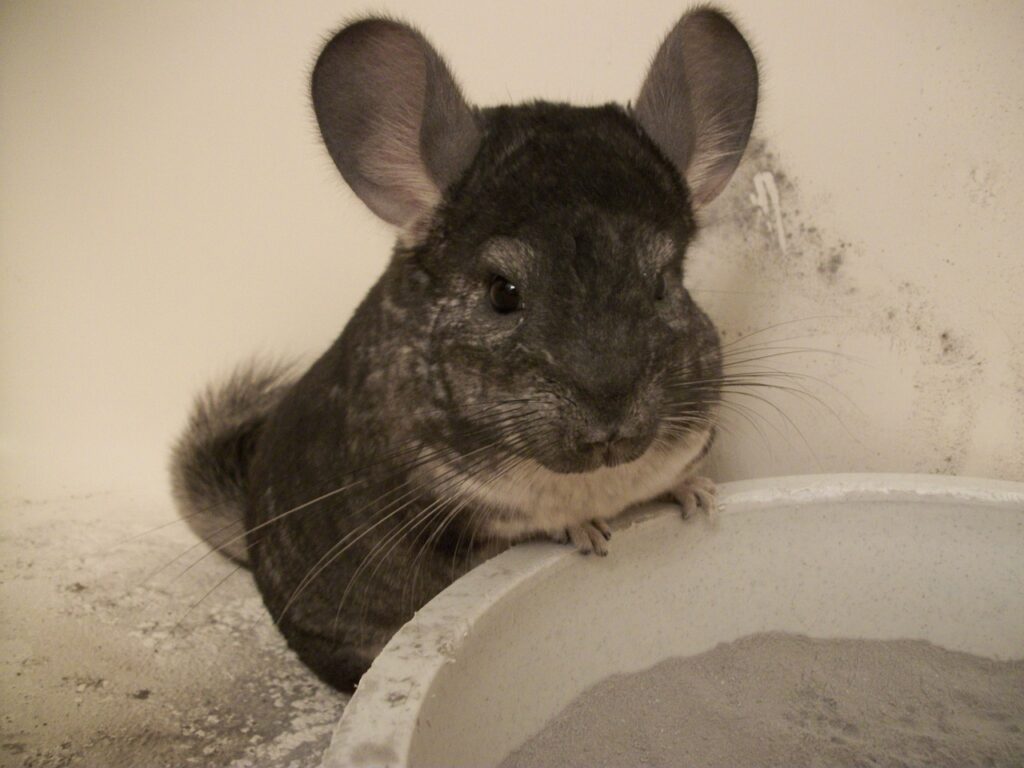
Health and Wellness
Veterinary Care
Regular veterinary check-ups are essential for monitoring your chinchilla’s health and addressing any potential issues promptly. Find a veterinarian experienced in exotic pet care who can provide preventive care, such as vaccinations and parasite control, as well as treatment for common ailments like dental problems and respiratory infections.
During veterinary visits, your chinchilla will undergo a thorough physical examination, including an assessment of their teeth, fur, and overall body condition. Your veterinarian may also recommend diagnostic tests, such as bloodwork or x-rays, to screen for underlying health problems and ensure your chinchilla remains in good health.
Common Health Issues
Chinchillas are generally hardy animals, but they are susceptible to certain health issues, including dental problems, gastrointestinal stasis, and fur chewing. Dental problems are common in chinchillas due to their continuously growing teeth, which require regular wear to prevent overgrowth. Providing appropriate chew toys and a diet high in fiber can help promote dental health and prevent issues such as malocclusion, where the teeth do not align properly. If left untreated, dental problems can lead to pain, difficulty eating, and other serious health complications.
Gastrointestinal stasis, or “GI stasis,” is another common health concern in chinchillas. This condition occurs when the digestive system slows down or stops working properly, often due to factors such as stress, dehydration, or an inappropriate diet. Signs of GI stasis in chinchillas include reduced or absent appetite, decreased fecal output, and lethargy. Prompt veterinary attention is crucial if you suspect your chinchilla may be experiencing GI stasis, as it can quickly become life-threatening if left untreated.
Fur chewing is a behavioral issue that some chinchillas may exhibit, where they excessively chew or pull out their fur, leading to bald patches or skin irritation. This behavior can have various underlying causes, including boredom, stress, or skin irritation. Providing enrichment activities, such as chew toys, and addressing any underlying health issues can help reduce fur chewing behavior in chinchillas.
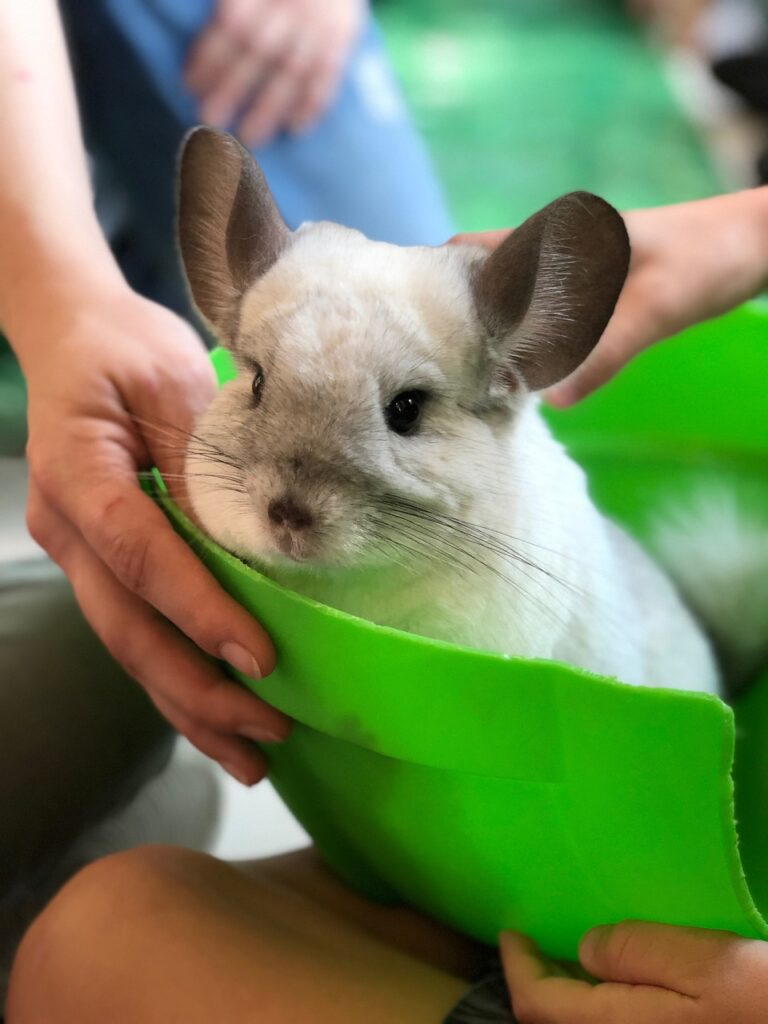
Conclusion
Owning a pet chinchilla can be a rewarding experience for those willing to provide the time, attention, and care these unique animals require! With their charming personalities, soft fur, and entertaining antics, chinchillas make delightful companions for individuals and families alike. By understanding their needs and providing a suitable environment, you can enjoy a fulfilling relationship with your furry friend for many years to come.
From their adorable appearance and playful nature to their specific dietary and grooming needs, chinchillas offer a unique pet ownership experience. However, it’s essential to research and prepare adequately before bringing a chinchilla into your home to ensure you can meet their needs and provide them with a happy, healthy life.
Remember, owning a pet chinchilla is a long-term commitment, and proper care and attention are essential to their well-being. By following the guidelines outlined in this article and consulting with experienced veterinarians or chinchilla experts as needed, you can provide your pet with the best possible care and enjoy a rewarding relationship for years to come!

